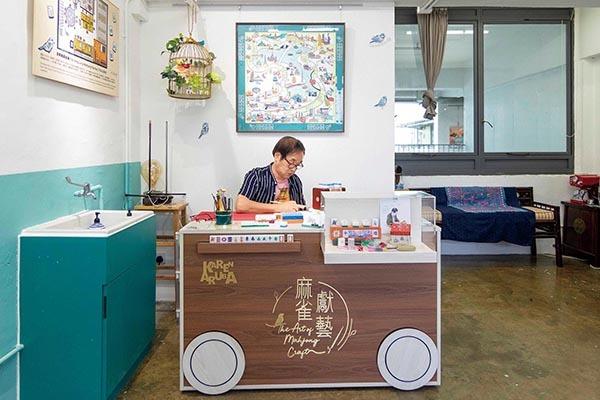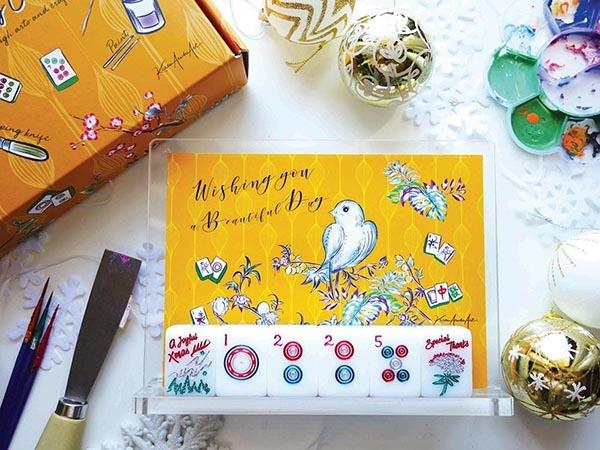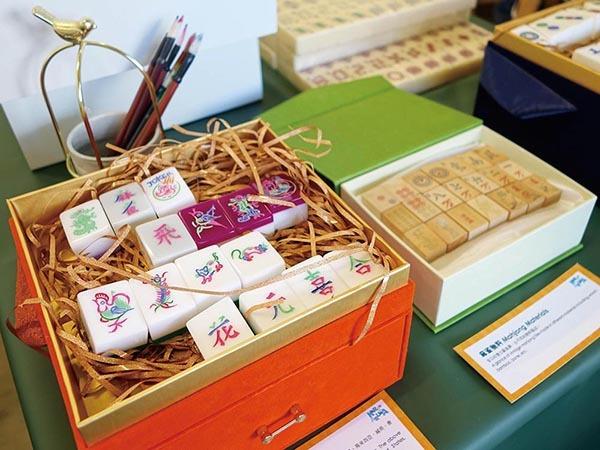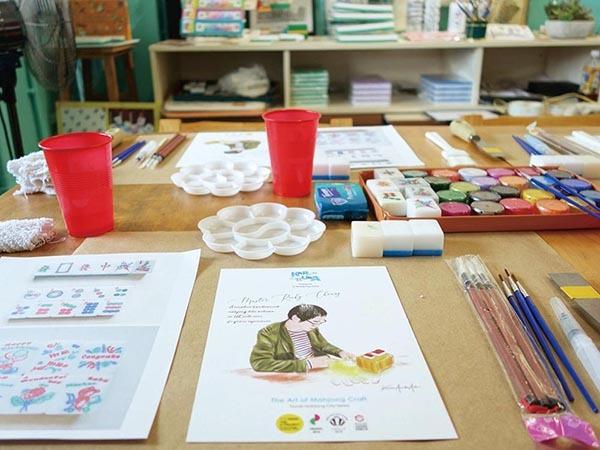See and experience the traditional game’s modern-day makeover at Karen Aruba Studio
 Master craftsman Ricky Cheung Sing-chung in the studio
Master craftsman Ricky Cheung Sing-chung in the studio
Call it classic meets contemporary or an old tradition with a modern twist. For the next month (until January 30, 2021), Karen Aruba Studio will bring visitors on an immersive journey of revival under the theme “Wanderlust in Mahjong Craftsmanship” every Saturday afternoon at its studio in the Jockey Club Creative Arts Centre (JCCAC) in Shek Kip Mei.
![]() The exhibition explores the various materials, techniques and patterns of hand-carved mahjong tiles from numerous countries
The exhibition explores the various materials, techniques and patterns of hand-carved mahjong tiles from numerous countries
Illustrator Karen Aruba’s grandfather set up the Fuk Hing Lung Mahjong Factory in 1963; it was shuttered in 2009. With her father, Ricky Cheung Sing-chung, one of the few remaining crafstmen for hand-carved mahjong tiles in Hong Kong, the pair strive to preserve the traditional mahjong-making process that has been registered as intangible cultural heritage in the city.
Visitors to the studio can admire historic hand-carved mahjong tiles, consult books about the history and art of mahjong, and marvel at the trendy designs and workshops – which combine hand-carving skills with laser-engraved technology, mix Chinese and Western cultural influences, and see tiles painted in refreshing new colours.
Mahjong, a game consisting of 144 tiles based on Chinese characters and symbols, involves four players – though there are three-player variations in Japan, South Korea and throughout Southeast Asia. Invented during the Qing Dynasty (1644–1912), the game has since spread worldwide and enjoys a strong cult following in the West; American brand Abercrombie & Fitch was selling mahjong sets in the US from 1920 onwards.
It was said that the clacking of the tiles during shuffling resembled the chattering of birds, so the game was originally called “maque” – meaning “sparrow” in Mandarin, which continues to be referenced in the Cantonese “ma jeuk” today. Meanwhile, in Thailand, mahjong is still referred to as “sparrow cards”.
These days, the legendary game has been adapted into widespread digital formats for entertainment across the globe. Thus, contemporary mahjong is now being viewed from a new artistic angle in local Hong Kong culture, and Karen Aruba Studio has been invited to show at exhibitions in PMQ and Hong Kong Youth Square. Visitors to the studio can take in the tiled art, and will also appreciate the pair’s new collection of Travel Mahjong City pieces and the Gold Leaf Hand-Carving Mahjong Set. It’s a win-win for all.
Karen Aruba Studio, L6-15, JCCAC, 30 Pat Tin Street, Shek Kip Mei;
karenaruba.com
 The 2020 limited edition Christmas Mahjong Gift Set
The 2020 limited edition Christmas Mahjong Gift Set
 The exhibition explores the various materials, techniques and patterns of hand-carved mahjong tiles from numerous countries
The exhibition explores the various materials, techniques and patterns of hand-carved mahjong tiles from numerous countries
 The exhibition explores the various materials, techniques and patterns of hand-carved mahjong tiles from numerous countries
The exhibition explores the various materials, techniques and patterns of hand-carved mahjong tiles from numerous countries
Images provided to China Daily
Click Here for More


